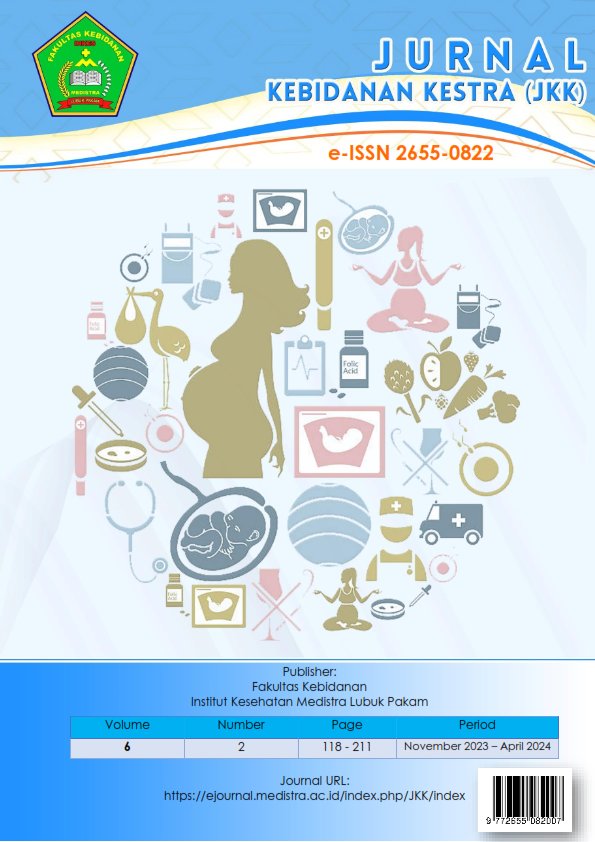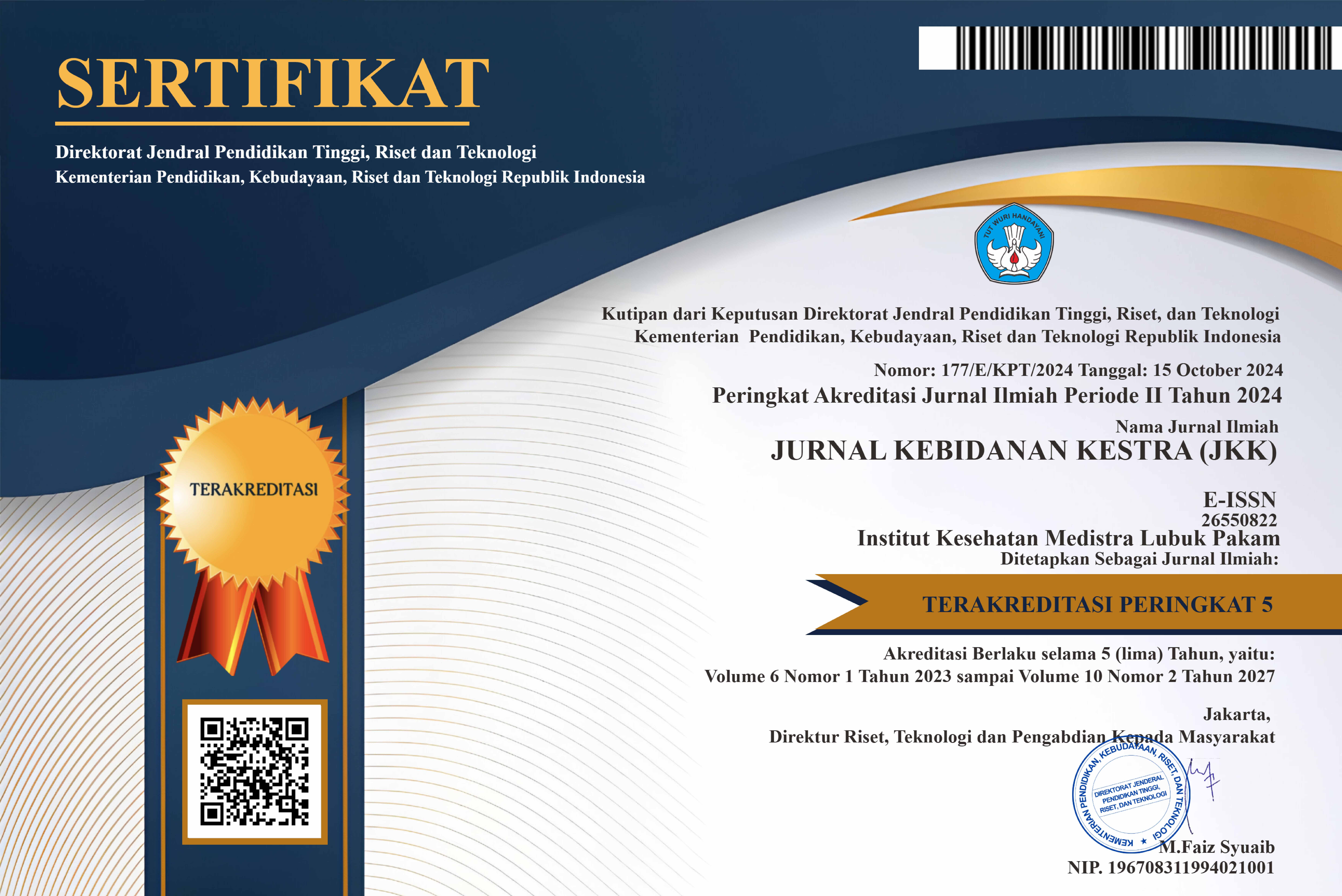The The Impact of Basic Life Support Training for Healthcare Workers in Primary Care on Emergency Patient Outcomes
DOI:
https://doi.org/10.35451/jkk.v6i2.2562Keywords:
Basic Life Support, Training, Healthcare Providers, Primary Care, Emergency Patients, Competence, Patient OutcomesAbstract
Basic Life Support (BLS) is a crucial emergency intervention that significantly improves survival rates in patients experiencing cardiac arrest or other life-threatening conditions. Primary healthcare facilities often serve as the first point of contact for emergency cases, making it essential for healthcare workers to possess adequate BLS skills. However, variations in training frequency and experience affect the proficiency of healthcare workers in performing BLS effectively. This study aims to analyze the impact of BLS training for healthcare workers in primary care settings on patient outcomes in emergency situations. A literature review and data analysis were conducted to assess the correlation between BLS training and patient outcomes, focusing on survival rates, response time, and procedural effectiveness. Data were collected from various studies, training programs, and case reports related to emergency response in primary healthcare settings. The findings indicate that healthcare workers who receive regular and structured BLS training demonstrate improved knowledge, faster response times, and higher success rates in emergency interventions. Patients treated by trained healthcare workers have better survival rates and reduced complications compared to those treated by untrained personnel. Additionally, the frequency of refresher courses and hands-on simulation training play a significant role in maintaining BLS competency.BLS training for healthcare workers in primary care settings significantly enhances emergency response efficiency and improves patient outcomes. Regular and systematic training programs should be implemented to ensure that healthcare professionals remain proficient in life-saving techniques. This study highlights the need for policy improvements in BLS education to optimize emergency medical care at the primary healthcare level.
Downloads
References
American Heart Association. (2020). Basic Life Support Provider Manual. Dallas, TX: American Heart Association.Kementerian Kesehatan RI. (2023). Riskesdas 2023: Laporan Nasional. Jakarta: Badan Penelitian dan Pengembangan [12] Mancini, M. E., Soar, J., Bhanji, F., et al. (2015). Part 12: Education, Implementation, and Teams: 2015 International Consensus on CPR and ECC Science. Circulation, 132(16_suppl_1), S242-S268.Kesehatan.
Perkins, G. D., Handley, A. J., Koster, R. W., et al. (2015). European Resuscitation Council Guidelines for Resuscitation 2015. Resuscitation, 95, 81-99.
Kleinman, M. E., Brennan, E. E., Goldberger, Z. D., et al. (2015). Adult Basic Life Support and Cardiopulmonary Resuscitation Quality. Circulation, 132(18), S414-S435.
Berg, R. A., Hemphill, R., Abella, B. S., et al. (2010). Part 5: Adult Basic Life Support. Circulation, 122(18_suppl_3), S685-S705.
Nolan, J. P., Soar, J., Cariou, A., et al. (2015). European Resuscitation Council Guidelines for Post-resuscitation Care. Resuscitation, 95, 202-222.
Idris, A. H., Guffey, D., Pepe, P. E., et al. (2012). Chest Compression Rates and Survival Following Out-of-Hospital Cardiac Arrest. Critical Care Medicine, 40(4), 1001-1009.
Travers, A. H., Perkins, G. D., Berg, R. A., et al. (2015). Part 4: CPR Overview: 2015 American Heart Association Guidelines Update for CPR and ECC. Circulation, 132(18_suppl_2), S315-S367.
Aufderheide, T. P., & Nolan, J. P. (2011). Cardiopulmonary Resuscitation: In the Era of Evidence-Based Medicine. Critical Care Clinics, 27(1), 1-16.
Tulek, Z., & Kanbak, G. (2019). Basic Life Support Training and Knowledge Retention in Healthcare Providers. Emergency Medicine International, 2019, 1-5.
Roppolo, L. P., Heymann, R., Pepe, P. E., et al. (2007). Layperson Training for High-Quality Adult Cardiopulmonary Resuscitation. Circulation, 116(4), 528-536.
Field, J. M., Hazinski, M. F., Sayre, M. R., et al. (2010). Part 1: Executive Summary: 2010 American Heart Association Guidelines for CPR and ECC. Circulation, 122(18_suppl_3), S640-S656.
Hardavella, G., Aamli-Gaagnat, A., Saad, N., et al. (2017). How to Prepare a Successful Research Proposal. Breathe, 13(3), 206-212.
Celenza, T., Gennat, H., O'Brien, D., et al. (2002). Community First Aid Training. Emergency Medicine Journal, 19(3), 233-238.
Sasson, C., Rogers, M. A. M., Dahl, J., & Kellermann, A. L. (2010). Predictors of Survival from Out-of-Hospital Cardiac Arrest. Circulation: Cardiovascular Quality and Outcomes, 3(1), 63-81.
Abella, B. S., Sandbo, N., Vassilatos, P., et al. (2005). Chest Compression Rates During Cardiopulmonary Resuscitation Are Suboptimal: A Prospective Study During In-Hospital Cardiac Arrest. Circulation, 111(4), 428-434.
Reder, S., Cummings, P., & Quan, L. (2006). Comparison of Three Instructional Methods for Teaching Cardiopulmonary Resuscitation and Use of an Automated External Defibrillator to High School Students. Resuscitation, 69(3), 443-453.
Meaney, P. A., Bobrow, B. J., Mancini, M. E., et al. (2013). Cardiopulmonary Resuscitation Quality. Circulation, 128(4), 417-435.
Downloads
Published
Issue
Section
License
Copyright (c) 2024 Muhammad Ishaq Porkas Lubis

This work is licensed under a Creative Commons Attribution 4.0 International License.
Copyright in each article is the property of the Author.



























